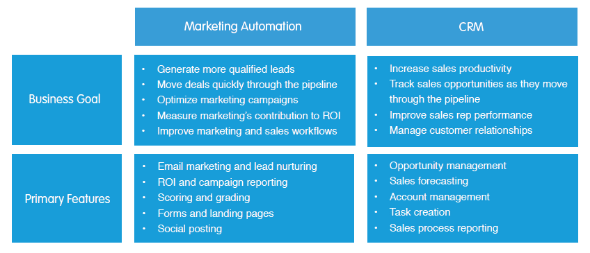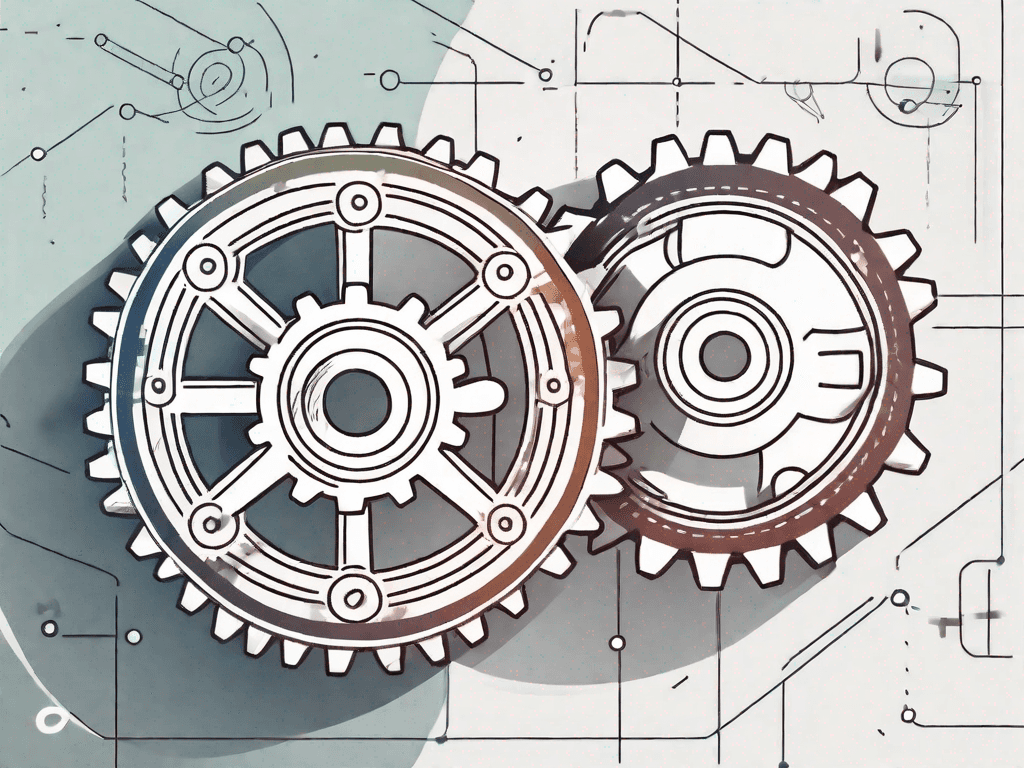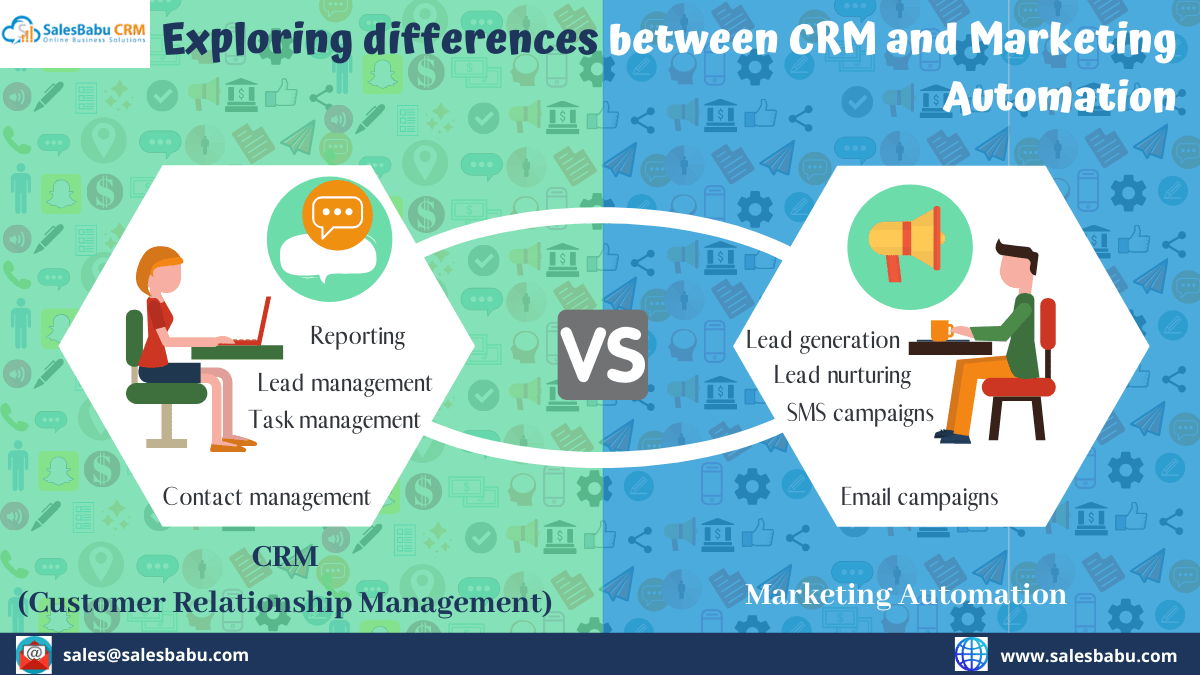CRM and sales automation are often mentioned together. But, they serve different purposes.
Understanding the difference can greatly benefit your business. CRM, or Customer Relationship Management, focuses on managing interactions with current and potential customers. It helps track communication, manage contacts, and build relationships. On the other hand, sales automation streamlines repetitive tasks in the sales process.
This includes sending follow-up emails, scheduling meetings, and updating sales records. Comparing CRM and sales automation is helpful because it clarifies which tools can better meet your needs. By knowing what each offers, you can make informed decisions, improve efficiency, and boost your sales strategy.
Introduction To Crm And Sales Automation
When diving into the world of business tools, you might stumble upon terms like CRM and sales automation. These buzzwords are often thrown around interchangeably, leaving many scratching their heads. However, understanding the difference between CRM (Customer Relationship Management) and sales automation is crucial for running an efficient and successful business. Let’s break it down into bite-sized pieces to make it easier to digest.
Purpose Of Crm
CRM, or Customer Relationship Management, is all about managing your interactions with current and potential customers. Think of it as a digital Rolodex, but with superpowers. It keeps track of customer data, past interactions, and preferences. The main goal? To build and maintain strong customer relationships. A CRM system helps you understand your customers better, so you can provide personalized service and improve customer satisfaction.
- Store Customer Information: A CRM system centralizes all your customer data in one place, making it easy to access and update.
- Track Interactions: Record every interaction you have with your customers, from emails to phone calls.
- Improve Customer Service: With all the information at your fingertips, you can provide timely and effective support.
- Analyze Data: Use the data to identify trends and patterns, helping you make better business decisions.
Purpose Of Sales Automation
Sales automation, on the other hand, is like having a personal assistant for your sales team. It takes over repetitive tasks, allowing your team to focus on what they do best – selling. Imagine automating tasks like sending follow-up emails, scheduling meetings, or updating contact information. The purpose of sales automation is to streamline the sales process, making it more efficient and less time-consuming.
- Automate Repetitive Tasks: Save time by automating tasks like data entry, follow-ups, and reminders.
- Increase Productivity: With automation handling the mundane tasks, your sales team can concentrate on closing deals.
- Improve Accuracy: Reduce human error by automating data entry and other routine tasks.
- Enhance Customer Engagement: Automated follow-ups and personalized communication can help keep your customers engaged.
In essence, while CRM focuses on managing customer relationships, sales automation is geared towards optimizing the sales process. Both are essential tools, but they serve different purposes. Understanding these differences can help you leverage both tools effectively and take your business to new heights.
So, what’s your take? Do you think your business needs a CRM, sales automation, or both? Let’s dive deeper into each tool to find out which one suits your needs the best.
Core Features Of Crm
When comparing CRM (Customer Relationship Management) with sales automation, it’s important to understand the core features that CRM offers. These features are designed to help you manage your customer relationships more effectively, ensuring you can keep track of every interaction and piece of data related to your clients. Let’s dive into two essential aspects: customer data management and interaction tracking.
Customer Data Management
One of the most critical features of a CRM system is its ability to manage customer data efficiently. Imagine having all your customer information in one place – sounds convenient, right? This includes contact details, purchase history, preferences, and any other relevant data.
- Centralized Database: A CRM system provides a single repository for all customer information, making it easy to access and update.
- Segmentation: You can segment your customers based on various criteria such as location, industry, or purchase behavior.
- Data Accuracy: By maintaining up-to-date records, CRMs help ensure that your customer data is accurate and reliable.
For example, if you run an online store, you can quickly find out which products a customer has purchased in the past and tailor your marketing efforts accordingly. This level of personalization can significantly enhance the customer experience.
Interaction Tracking
Tracking interactions with customers is another vital feature of CRM systems. Ever wondered how you can keep track of all the emails, calls, and meetings with clients? Here’s how CRM can help:
- Communication Logs: CRMs record all forms of communication, including emails, phone calls, and meetings. This helps in understanding the history of interactions with each customer.
- Task Management: You can set reminders and tasks for follow-ups, ensuring no interaction falls through the cracks.
- Automated Updates: Many CRMs offer automated updates to remind you of important dates, such as contract renewals or birthdays.
Picture this: You’ve just finished a call with a potential client. Instead of scribbling notes on a piece of paper that might get lost, you log the details into your CRM. Next time you interact with the client, you can easily refer back to your notes, making your follow-up more effective and personalized.
In essence, the core features of CRM, like customer data management and interaction tracking, play a pivotal role in maintaining and enhancing customer relationships. They provide the tools you need to understand your customers better and engage with them in meaningful ways.
Core Features Of Sales Automation
Sales automation tools have become essential for streamlining sales processes. They help manage tasks efficiently and improve productivity. Understanding the core features of sales automation can help businesses make informed decisions.
Lead Management
Lead management is a crucial feature of sales automation. It helps track and manage potential customers. The system captures leads from various sources like websites and social media. It then organizes and scores these leads based on their engagement.
Sales teams can focus on high-quality leads, improving conversion rates. Lead management tools also provide insights into customer behavior. This helps tailor sales strategies to meet specific needs.
Automated Workflows
Automated workflows streamline repetitive tasks. They save time and reduce human error. Sales automation tools can automate tasks like sending follow-up emails or scheduling meetings.
These workflows ensure that no lead falls through the cracks. They also keep the sales process moving smoothly. Automation allows sales teams to focus on building relationships and closing deals.
Automated workflows can be customized to fit unique business needs. This flexibility makes them a valuable asset in any sales strategy.

Credit: blog.varstreetinc.com
Key Differences Between Crm And Sales Automation
Understanding the key differences between CRM and sales automation is crucial for any business. Both tools aim to improve sales processes, but they serve distinct purposes. Knowing their differences helps in choosing the right tool for your business needs.
Focus Areas
CRM focuses on managing customer relationships. It tracks interactions and stores customer information. This helps in understanding customer needs and improving service. Sales automation, on the other hand, aims to streamline repetitive tasks. It focuses on efficiency in the sales process.
Functionalities
CRM systems offer functionalities like contact management, lead tracking, and customer support. They provide a 360-degree view of the customer. Sales automation tools handle tasks like email campaigns, follow-ups, and pipeline management. They focus on automating routine tasks to save time.
Benefits Of Crm
Customer Relationship Management (CRM) systems offer numerous benefits for businesses. They streamline processes, enhance customer interactions, and drive growth. Understanding these benefits can help organizations make informed decisions about CRM adoption.
Enhanced Customer Relationships
CRM systems provide a unified view of each customer. This helps businesses understand customer needs and preferences better. They can track interactions, purchase history, and feedback. This information allows personalized communication, making customers feel valued. Personalized experiences build trust and loyalty.
Improved Customer Retention
Retaining customers is crucial for any business. CRM systems help monitor customer satisfaction and engagement. They identify at-risk customers through behavior patterns. Businesses can then take proactive measures to address issues. Happy customers are more likely to stay and recommend the business to others. This not only retains existing customers but also attracts new ones.
Benefits Of Sales Automation
Sales automation can be a game-changer for your business. If you’ve ever felt overwhelmed by repetitive tasks, then sales automation might just be the solution you need. By automating sales processes, you can save time, reduce human error, and increase your team’s productivity. Let’s dive into the specific benefits of sales automation.
Increased Sales Efficiency
One of the biggest benefits of sales automation is increased efficiency. Imagine not having to manually enter data or follow up with every lead. Sales automation tools can handle these tasks for you. This means your team can focus on what they do best: selling. With automation, you can:
- Track leads and customer interactions automatically
- Generate and send proposals quickly
- Receive instant notifications when a lead takes action
By removing these time-consuming tasks, your sales team can close more deals faster. Think of it as having a personal assistant that never sleeps!
Streamlined Sales Processes
Another fantastic benefit is the streamlining of sales processes. Sales automation tools can help you create a smooth, consistent workflow. This ensures that every member of your team is on the same page. Here are some ways sales automation can streamline your processes:
- Standardized communication: Use templates for emails and messages to ensure a consistent tone and branding.
- Automated follow-ups: Set up automated follow-up sequences to nurture leads without manual intervention.
- Centralized data: Keep all customer information in one place, accessible to everyone on the team.
By having a streamlined process, you reduce confusion and improve efficiency. It’s like having a well-oiled machine that runs smoothly without constant tinkering.
In conclusion, sales automation not only boosts efficiency but also ensures your sales processes are streamlined. This leads to better performance, happier customers, and ultimately, more sales. So why not give sales automation a try and see the difference it can make for your business?
When To Use Crm
Choosing the right tool for managing customer interactions can be confusing. CRM systems and sales automation often appear similar, but they serve different purposes. Understanding when to use a CRM can help you improve your customer relationships and business processes.
Customer-centric Strategies
CRM systems are essential for businesses focused on customer-centric strategies. They help gather and organize customer data. This information includes contact details, purchase history, and preferences. By analyzing this data, you can offer personalized experiences. This approach increases customer satisfaction and loyalty.
CRMs also help track customer interactions across various channels. This ensures consistent communication. It also helps in identifying customer needs and expectations. Meeting these needs can lead to long-term customer retention.
Long-term Relationship Management
CRMs are ideal for long-term relationship management. They store detailed records of all customer interactions. This helps in building a complete customer profile. Understanding customer history allows you to anticipate their future needs. This proactive approach can lead to stronger relationships.
CRMs also assist in managing follow-ups and reminders. This ensures no important task is missed. Regular follow-ups show customers that you value them. This builds trust and encourages repeat business.

Credit: www.emailvendorselection.com
When To Use Sales Automation
In the fast-paced world of business, sales teams are constantly seeking ways to improve their efficiency and effectiveness. One powerful tool at their disposal is sales automation. But when is the right time to use sales automation? Let’s explore the key scenarios where sales automation can make a significant impact.
Sales Process Optimization
Sales automation can be a game-changer when it comes to optimizing the sales process. By automating repetitive tasks, sales teams can focus on what they do best: selling. For instance, imagine a sales representative who spends hours manually entering data into a CRM system. With sales automation, this tedious task can be automated, freeing up valuable time for more strategic activities.
Here’s a simple example:
| Manual Process | Automated Process |
|---|---|
| Entering contact information | Auto-populating contact fields |
| Sending follow-up emails | Automated email sequences |
By automating these tasks, sales teams can close deals faster and more efficiently. And who wouldn’t want that?
Lead Generation And Follow-up
Another critical area where sales automation shines is in lead generation and follow-up. Generating leads is just the first step; the real challenge lies in nurturing those leads and turning them into customers. Sales automation tools can help by automating the follow-up process, ensuring that no lead falls through the cracks.
- Automated Lead Scoring: Automatically score and prioritize leads based on their behavior and engagement.
- Personalized Email Campaigns: Send personalized emails to leads at the right time, increasing the chances of conversion.
- Follow-Up Reminders: Set automated reminders for follow-up calls and meetings.
For example, imagine receiving an email at just the right moment, addressing your specific needs. It feels personal and timely, right? That’s the magic of sales automation!
In conclusion, sales automation can be a powerful ally in optimizing the sales process and ensuring effective lead generation and follow-up. By leveraging these tools, sales teams can work smarter, not harder, ultimately driving better results. So, when should you use sales automation? Whenever you want to streamline processes, save time, and boost your sales performance!
Integrating Crm And Sales Automation
Integrating CRM (Customer Relationship Management) and Sales Automation can seem like a daunting task. However, when done right, it can transform your business operations and drive growth. By combining these two powerful tools, you can streamline your processes, enhance customer engagement, and boost sales efficiency. But how exactly do you achieve this integration, and what benefits can you expect? Let’s dive in!
Combined Benefits
The integration of CRM and Sales Automation offers a plethora of advantages. Here are some of the key benefits:
- Improved Data Management: With all your customer data in one place, you can easily track interactions, preferences, and purchase history.
- Enhanced Customer Experience: Personalized communication and timely follow-ups become easier, leading to higher customer satisfaction.
- Increased Efficiency: Automating repetitive tasks saves time and reduces errors, allowing your sales team to focus on closing deals.
- Better Sales Insights: Integrated analytics provide a clearer picture of your sales pipeline, helping you make informed decisions.
Implementation Tips
Successfully integrating CRM and Sales Automation requires careful planning and execution. Here are some tips to help you get started:
- Define Your Goals: Clearly outline what you want to achieve with the integration. Are you looking to improve lead management or enhance customer service?
- Choose the Right Tools: Select CRM and Sales Automation tools that are compatible and can seamlessly integrate. Check for features like API compatibility and data synchronization.
- Train Your Team: Ensure your team is well-versed with the new integrated system. Provide training sessions and resources to help them adapt quickly.
- Monitor and Optimize: Regularly review the performance of the integrated system. Use analytics to identify areas for improvement and make necessary adjustments.
Integrating CRM and Sales Automation might seem challenging, but with the right approach, it can be a game-changer for your business. So, why wait? Start reaping the benefits today!

Credit: www.breakcold.com
Frequently Asked Questions
What Is The Difference Between Crm And Sales Automation?
CRM manages customer relationships and interactions. Sales automation streamlines sales tasks and processes for efficiency. Both improve sales performance.
What Is The Difference Between Crm And Marketing Automation Sales Engagement?
CRM manages customer relationships and stores data. Marketing automation sales engagement focuses on automating marketing tasks and nurturing leads.
What Is The Difference Between Crm And Sales?
CRM manages customer relationships and interactions. Sales focus on selling products or services to customers.
Is Sales Automation An Example Of Type Of Crm?
Yes, sales automation is a type of CRM. It streamlines sales processes, manages customer interactions, and boosts productivity.
Conclusion
Understanding the differences between CRM and sales automation is crucial. CRM focuses on managing customer relationships. Sales automation streamlines sales tasks. Both tools offer unique benefits. Choosing the right one depends on your business needs. Evaluate your goals and processes.
Implementing these tools can enhance productivity. Make informed decisions for better results. Consider both options carefully. Your business success depends on it.

